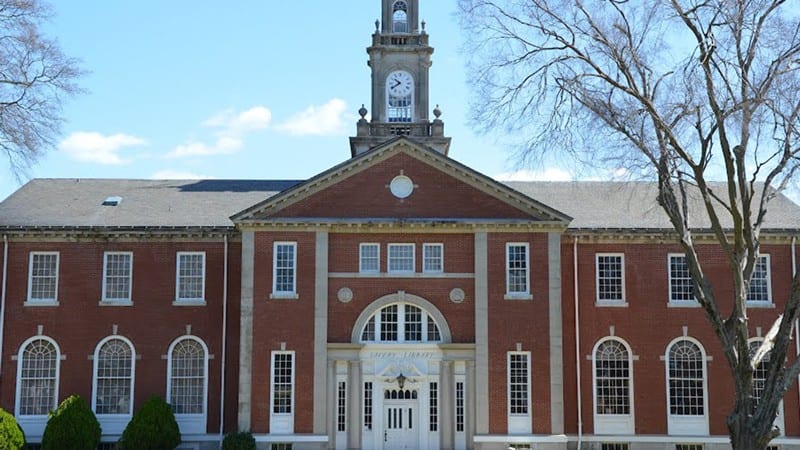How One HBCU President Managed the Coronavirus Shutdown

Before the pandemic, Talladega College was on a roll. Its leader wanted to make sure the crisis didn’t slow its momentum.
Dr. Billy Hawkins is the president of UNCF-member institution Talladega College in Alabama. He is also chair of the 37 presidents of the UNCF member institutions.
Talladega College, Alabama’s first private historically black liberal arts college, has overcome seemingly insurmountable obstacles. When I began my tenure as president in 2008, we were in danger of losing accreditation and enrollment was so low that our doors were on the brink of closing.
Fortunately, after years of labor, the college was transformed. We recently cut the ribbon on three new buildings; launched our first-ever graduate program; took 23 students on a tour of Japan; and celebrated the return of Hale Woodruff’s critically-acclaimed Amistad Murals to the campus. We also enjoyed record-high enrollment in both the 2018-2019 and the 2019-2020 academic years.
The phrase "when America gets a cold, black America gets the flu" may sound cliche, but it often rings true.
When rumblings about the possibility of a nationwide coronavirus outbreak began, I sensed that protecting our campus community from its ravages could prove to be one of the greatest challenges of my life. Long before the first case was reported in our county, I directed our leadership team to establish and maintain contact with local and national health authorities; increase sanitization campuswide; keep me apprised of changes related to the outbreak; and begin sharing safety precautions with students, faculty and staff.

Being in a relatively rural community was a plus for Talladega, but I knew our location did not guarantee our safety. I devoured information about everything from proper hand-washing to the value of a contact-free greeting in my effort to remain ahead of the problem. I canceled all campus events, and all nonessential faculty and staff travel was postponed or canceled.
As chair of the 37 presidents of UNCF-member institutions, I felt it was critical to maintain frequent contact with other HBCU presidents and exchange information that might help each of us to better protect our students, faculty, staff and community during this tumultuous season. The phrase “when America gets a cold, black America gets the flu” may sound cliche, but it often rings true.
Shutting down residence halls and sending all students home immediately might have been a wise decision for some institutions. However, it wasn’t the right choice for Talladega because exercising wisdom without compassion could have proven detrimental to our students.
We have students from California and New York and other high-risk areas whose parents urged them to remain on campus where they were less likely to be exposed to the deadly virus. We have international students who might not have been allowed to return to the U.S. if they left the country. We have homeless students who had no place to go. Some of our students could not afford to put their furnishings in storage. Many could not afford airfare home. More than a few were anxious about studying remotely because they did not own computers. Inability to pay for Wi-Fi was another concern. Some students were fearful that leaving their campus jobs would lead to food insecurity.
While these issues can affect students at any campus, they are often more prevalent among HBCU students.
I considered various options, including keeping students on campus during spring break to reduce the likelihood of anyone being exposed to the virus during vacation and returning to campus to infect others. Once evidence began suggesting that the virus was moving rapidly and would eventually reach our community, I knew that closing the campus was the best option.
The college quickly partnered with local businesses that were able to assist our students. We also disseminated information about free and discounted travel options to help students get home, and we established the Student Care Emergency Relief Fund. During this time, we continued to urge students to practice social distancing, wash their hands frequently, and make other adjustments to protect their health and the health of others.
Within a week of making the decision to close the campus, over 90% of our students were safely home and prepared to work remotely. I am proud of how they adjusted to the crisis and finished the semester online. However, the financial strain was palpable for many of our students. Fortunately, the college applied for and secured over $2 million in federal funding to help our students and the institution during the pandemic.
On social media sites, many people have posted “What coronavirus taught me” stories. While I never took Talladega’s success for granted, this pandemic has reminded me that our institution has a remarkable tradition of rising up to meet seemingly-insurmountable challenges and obstacles. I know that Talladega College, like most other colleges, will eventually overcome the challenges presented by this pandemic.
I will not dismiss the adverse impact the economic downturn caused by the pandemic could have on colleges. Nor will I dismiss the concern that many parents will have about sending students off to college post-COVID-19. However, I know that people will continue to desire an education and that a significant number of students will choose face-to-face instruction over remote learning.
No one knows exactly what the post-COVID-19 college campus will look like, but we must remain vigilant, weigh all options, and choose those that will keep our students, faculty, staff and community safest as we continue to navigate these unprecedented challenges.
This article originally appeared on educationdive.com.